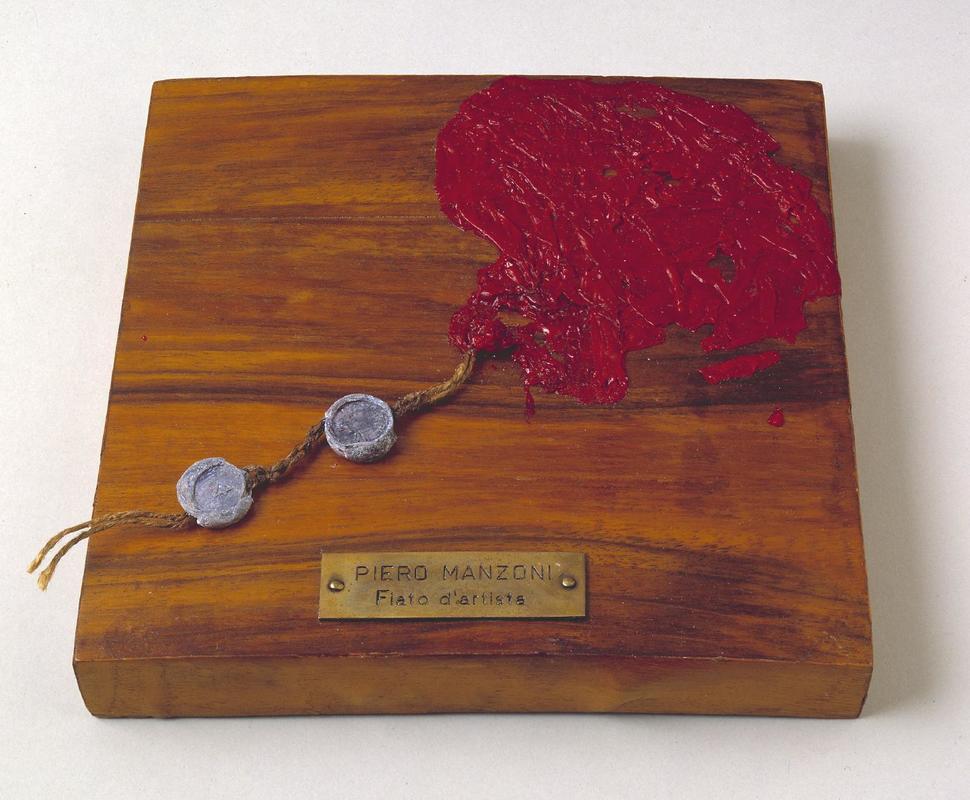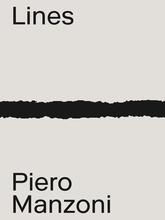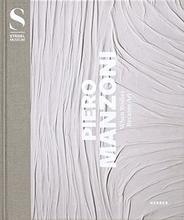More about Artist's Breath
- All
- Info
- Shop

Sr. Contributor
If you love Andy Warhol, you need to get to know Piero Manzoni, specifically his Artist's Breath.
His commentary on consumer items as art is similar to Warhol’s. But he pushes the limits even more.
Maybe you’ve already heard of Piero. If so, it’s probably because his shit sells for a lot of money. Literally. He is best known for putting feces in tin cans; these cans have sold at auction for more than $100,000.
Artist’s Breath comes out of the other end of the artist. Back in 1960, Piero created a series of works that required him to blow up balloons. He attached each balloon to a wooden base with string. He added lead seals humbly bearing his name.
What is Artist’s Breath really about? It might seem that the concept was to share a little bit of himself forever. Well, that’s just a bunch of hot air. The balloons deflated, and the artist is out of breath. But that’s kind of the point for Piero.
Deborah Schultz writes about how it is representative of his concept “of nothingness and of the infinite.” Furthermore, she quotes Piero as saying, “why not empty the receptacle?” The breath here literally empties out. This line of thinking provokes one of the most common questions in art, which is, “WHAT IS ART ANYWAY?”
A balloon is an object. Filling a balloon with the breath is an act. Attaching it, displaying it and marketing it arguably makes it art. If the balloon deflates, does that make it more art or less so? There is a mystery book called “Killing the Emperors” that hones in on this idea. In the book, people are debating a work of art called Take a Deep Breath. One argues that it’s a fraud; another that “the concept is thrilling”. The person who doesn’t think this is art goes on to say that it’s basically a copycat of the idea in Artist’s Breath.
This type of argument is one of the things that makes it so fun to look at art with other people. You don’t have to agree with each other about what a piece means. You can enjoy hearing what others have to say, debating it, and coming up with your own fun conclusions.
Sources
- Howarth, Sophie. "Artist’s Breath, Piero Manzoni, 1960.” Tate. June 2000. Accessed August 21, 2018. https://www.tate.org.uk/art/artworks/manzoni-artists-breath-t07589
- Schultz, Deborah. Marcel Broodthaers: Strategy and Dialogue. Peter Lang Publisher. 2007.
- Edwards, Ruth Dudley. Killing the Emperors: A Robert Amiss/Baroness Jack Troutbeck Mystery. Poisoned Pen Press, 2012.
- Lesnik-Oberstein, K. Children in Culture, Revisited: Further Approaches to Childhood. Palgrave Macmillan. 2011.













